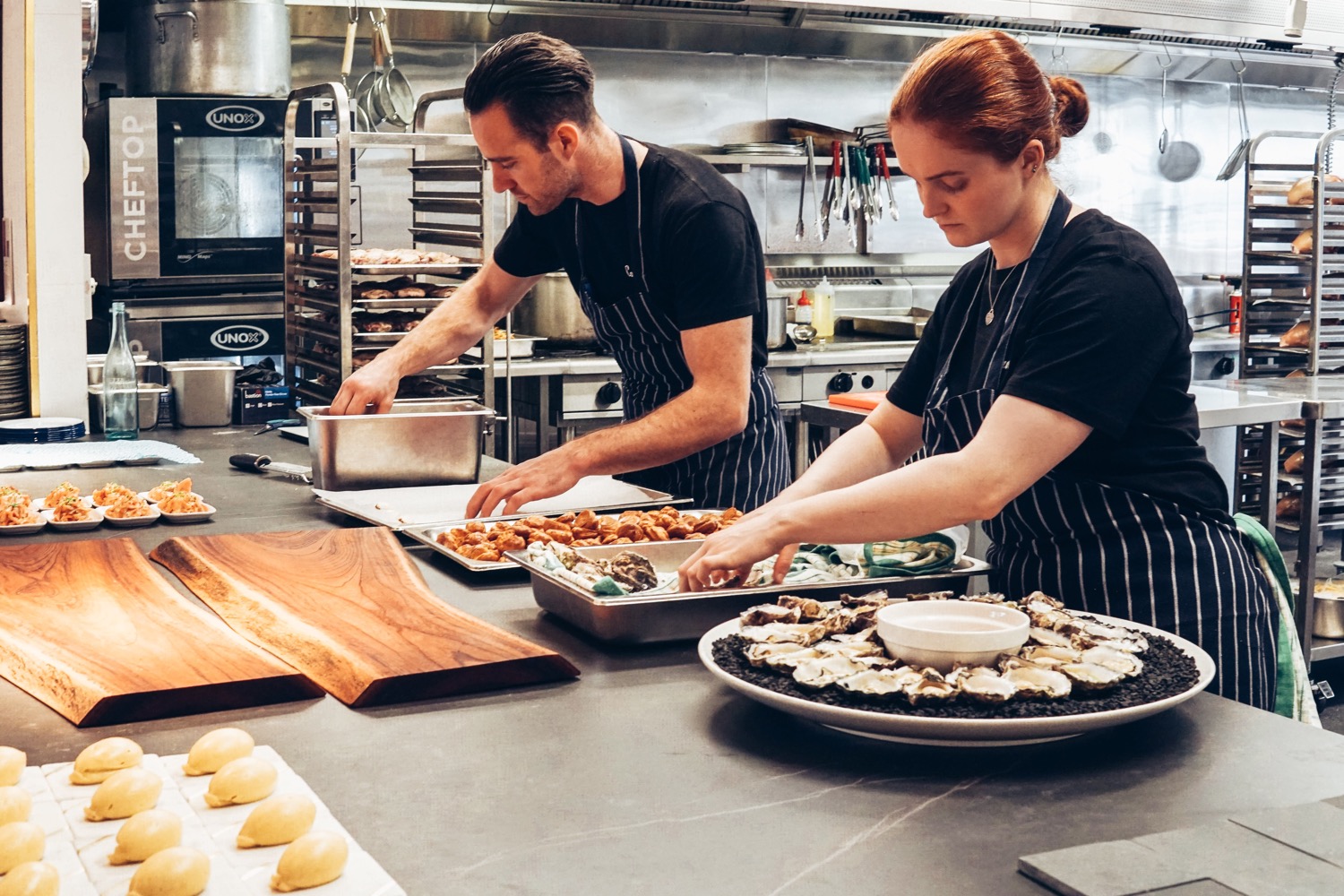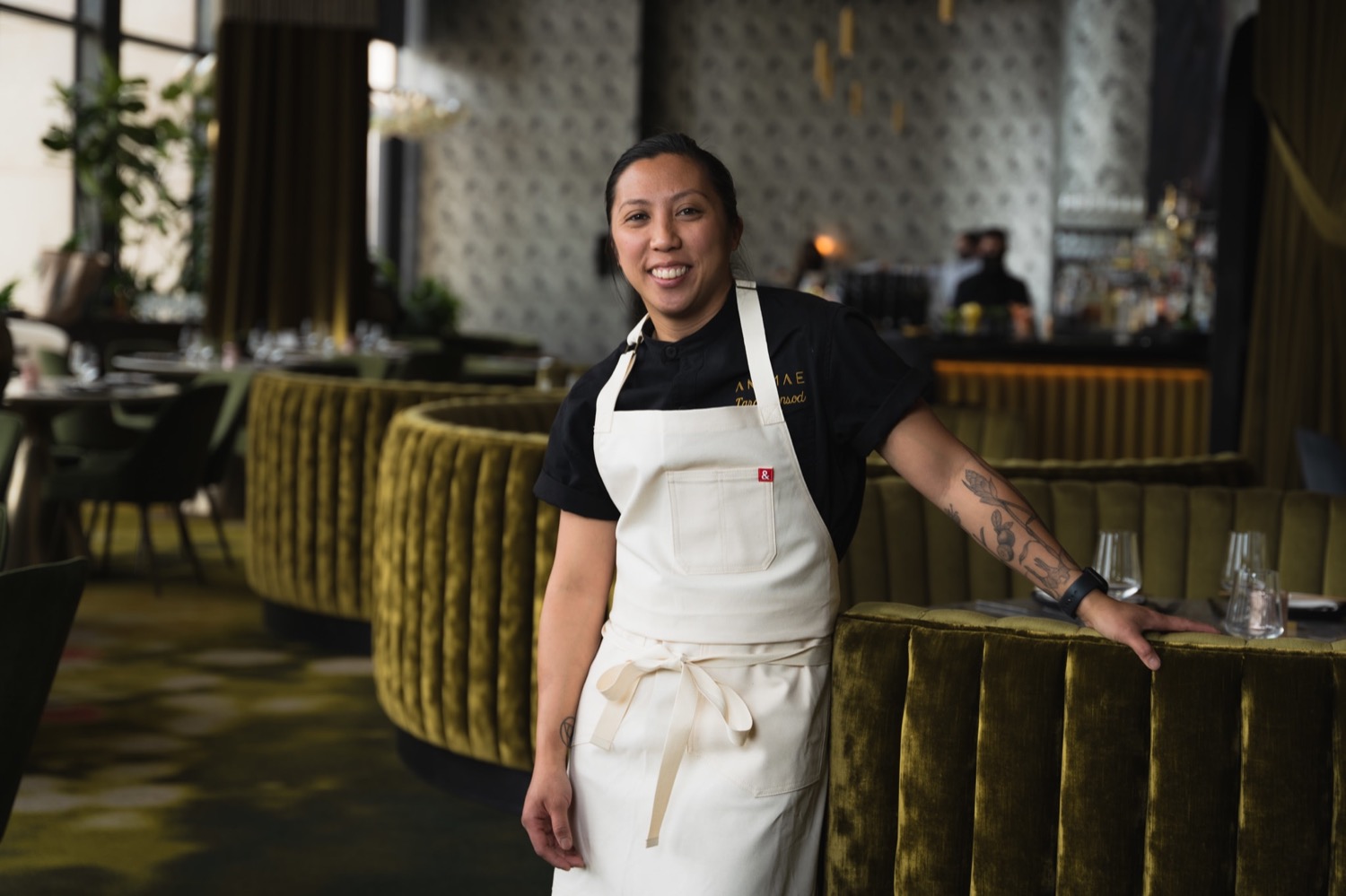Whoever wrote the old saw about the key to comedy — timing — might well have begun their career in a restaurant. The same physics apply to food prep and delivery, where time absolutely is money. The age of your ingredients will make or break you. Ditto the speed at which you can assemble them into a complex dish. Ditto the precision with which you can cook that porterhouse and have it arrive at the table at the same perfect temperature as the spaghetti carbonara you’re also whipping up. Ditto the ease with which you can clean up, assess your needs for the next day, and send your staff home without utterly burning them out.
The masters of restaurant timing get the most out of their minutes, morsels, movements, and money. That is, in a word, efficiency.
Your restaurant’s efficiency depends on a harmony between your operations and your staff, both in the so-called front of house (your host/hostess, managers, bartenders, and waitstaff) and your back of house (your chefs, dishwashers, and line cooks). And it depends on all of those people doing their jobs well, making good decisions in the moment, and being able to rely on best practices and systems to support them.
If you’re operating at less than peak efficiency, congratulations: It means you’re a normal restaurant, run by human beings. But you can obviously make some gains.
Begin by investing in your staff, making sure they’re well-trained and supported. Essential to this is installing clear, reliable means of communication, so that management and staffers all know their roles at any given moment. Attracting and keeping good staffers is tough, for sure: The country is in a labor shortage, with restaurant and hospitality employees quitting in droves. But you can control incentives and a work environment that make staff happy and productive. The better the environment, the more motivated the staff — and the more likely your operation will run smoothly.
Next, consider ways in which restaurant technology can help you shore up your remaining weak spots. Restaurant softwares can do a fantastic amount of grunt work for you these days.
Tips for improving your restaurant’s efficiency
For starters, your point of sale system, or POS, is going to have numerous functions built into it. But look at where you’re losing time during your day and look for the ways companies are solving that issue. Do you need help scheduling your employees? Cutting down on food waste? Keeping track of inventory? These days, there is definitely an app for that.
Consider ways, too, to keep your customers spending the least amount of time at your establishment, spending as much money as possible, and coming back regularly. Dine-in restaurants struggling amid the pandemic need to make every cover count. A reservation and table management platform can help the front of house move people through the dining room at maximum polite velocity. Consider how much time is saved when customers can simply scan a QR code to bring up a menu on their phones, or can pay at the table without a server having to run their credit card at the register. A paranoid, touchless world has taken some of the joy out of hospitality, but it does bring some efficiencies.
Other aspects of your operation are simply out of your control. Supply chains are a huge one. Delays, price shocks — it’s brutal out there right now. Make sure your team knows what to order, when to order, how much to order, and who to order it from. Use a management software to track inventory and even alert staff when it’s time to re-up with suppliers. You’ll save your chef’s time, keep food waste to a minimum, and be able to offer a consistent menu.
Tips to run a restaurant kitchen efficiently
Streamline food prep
Depending on your operation, it may be time to shake hands with a robot. Rising labor costs and shortages of workers have made automated kitchens a godsend for many operators, especially for remedial tasks like prepping. Robots are consistent and in the right roles they free up staff to do more specialized jobs. Oh, and robots never call out sick. Their immune system is simply next-level.
Communicate effectively
Everyone doesn’t have to like each other, but they still have to talk to each other. Maybe your restaurant opts for weekly staff meetings or for digital announcements. Whatever you choose, make sure everyone feels updated and included.
Lay out your kitchen efficiently
If you’re fast-casual, you have to crank out orders at high volume. If you’re fine dining, you may want an open kitchen to show off as many plates as possible. Either way, you want to set up your staff to move swiftly and effectively. There are two main approaches to restaurant floor plan design to make that happen.
An assembly line kitchen layout focuses on building meals at high speed. Think Chipotle: a line of workers sliding your burrito along the line, stacking it all the way to the register. Behind the scenes, workers prep and cook to stock the line so that the servers can handle high volume. Even in tight spaces, everyone has room to accomplish a defined task, and move between those tasks with ease.
In contrast, a zone-style layout builts around stations, with an area for line cooks, an area for food preppers, an area for dishwashers, and a clear designated “order up” area for servers and/or deliveries to nab completed orders. This layout typically requires a larger space but allows a kitchen to produce a wider range of dishes. Unlike the assembly layout, in which essentially anyone can do any of the tasks, zone layouts support workers in specialized roles.
[Photo by Elle Hughes from Pexels]




